Shio koji’s simple ingredients dramatically enhance the flavors for yakisoba, it adds nice umami flavor and elegant tastes to this classic Japanese noodle dish.
Yakisoba (焼きそば) is a popular Japanese stir fried noodle dish similar to chow mein. The noodles are much thinner than the Chinese version and it’s seasoned with Worcestershire-like sauce instead of soy sauce.
Recently, a college friend in Japan shared a picture of her bento on Facebook and I was really intrigued because it was Yakisoba seasoned with shio koji. I knew this would be fun and tasty to try!
Flavor Up Yakisoba with Shio Koji
Fermented from a mixture of malted rice, salt and water, Shio Koji is a century-old all purpose seasoning in Japan. It wasn’t being used as widely in the modern Japanese home kitchen until it made a comeback again. I was totally taken by surprise with its elegant flavor and how it enhances the flavor of yakisoba so dramatically. This versatile seasoning adds nice umami to the simple combination of noodles, meat, and veggies. It must have something to do with the enzymes in shio koji that draw out sweetness from the starches of the noodles and the other ingredients. Instead using a lot of yakisoba sauce on the noodles, I now use shio koji in my yakisoba as the alternative. It tastes much better, you’ll have to try it to believe it.
Yakisoba is really simple to make and it’s versatile. Throw in your favorite protein (chicken, shrimp, sausages, etc) and veggies in a wok and finish it with noodles and seasonings. It’s a great weeknight meal for a busy day.
If you love stir fried noodles, I hope you give this Shio Koji Yakisoba a try!
By the way, Hikari Miso is currently hosting sweepstakes to give away 30 Shio Koji bottles on their website (U.S. only). Entries will be accepted until 11:59 pm PST December 15, 2013 (2 more days!). Don’t miss out on a chance to win a bottle! You can click here to enter. Good luck!
To get the Yakisoba with Shio Koji recipe, click here over at the Hikari Miso’s website.
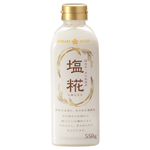
Note: If you cannot find shio koji, use 1/2 tsp. salt for marinating and 1 to 1 1/2 tsp. salt for seasoning instead for this recipe. However, I haven’t tried seasoning with just salt yet. If you want the regular Yakisoba recipe, please click here.
Hikari Miso products are available in Japanese grocery stores and Amazon.
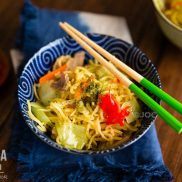
Shio Koji Yakisoba
Ingredients
- ½ lb sliced pork belly (cut into 1 inch (2.5 cm) pieces)
- 1 Tbsp shio koji (for marinating pork belly; I used Hikari Miso Shio Koji)
- 2 Tbsp neutral oil
- 2 cloves garlic (sliced)
- 2 cups chopped green cabbage (about 4 cabbage leaves)
- 1 ½ cup bean sprouts
- ⅓ cup julienned carrot
- 3 servings yakisoba noodles (13 oz, 375 g)
- 1 Tbsp sake (can substitute it with water)
- 2 Tbsp water
- 2 tsp soy sauce
- 2 Tbsp shio koji
- aonori (dried green laver seaweed) (sprinkling on top)
Instructions
- Put the pork belly in a bowl, add shio koji and marinate for 30 minutes.
- Heat a wok or pan with oil over medium-high heat. When the oil begins to smoke, add the garlic and meat and stir-fry until the meat is no longer pink.
- Add the cabbage, bean sprouts, and carrots into the wok and stir-fry until they are tender.
- Add the noodles, sake, water, soy sauce, and shio koji. Continue to stir until the noodles are well blended with the seasonings and completely cooked through. Transfer to plates and sprinkle aonori. Serve immediately.
To Store
- You can keep the leftovers in an airtight container and store in the refrigerator for 3 days and in the freezer for a month.
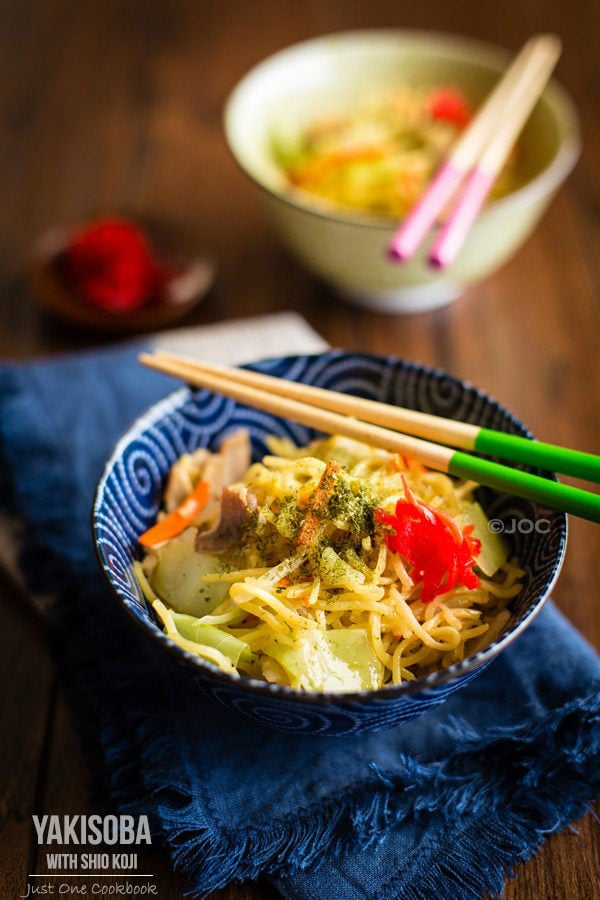
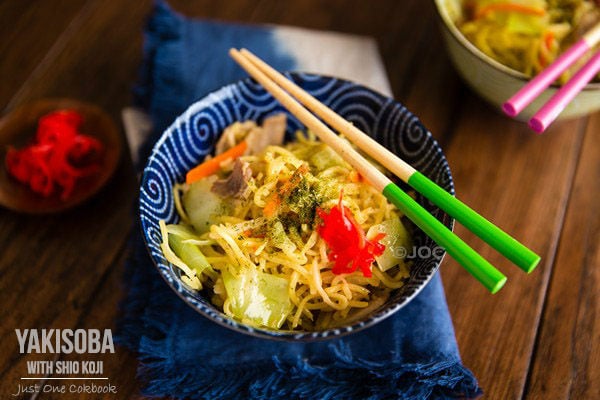
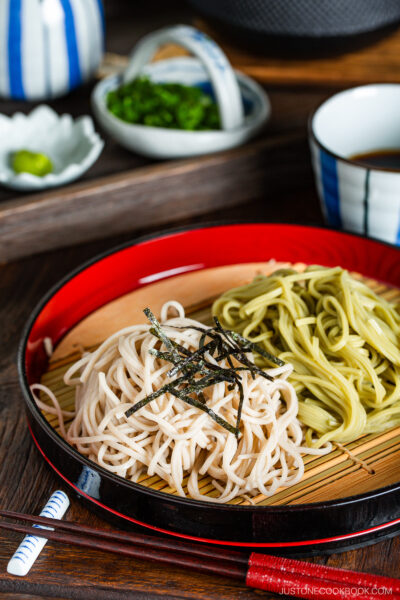
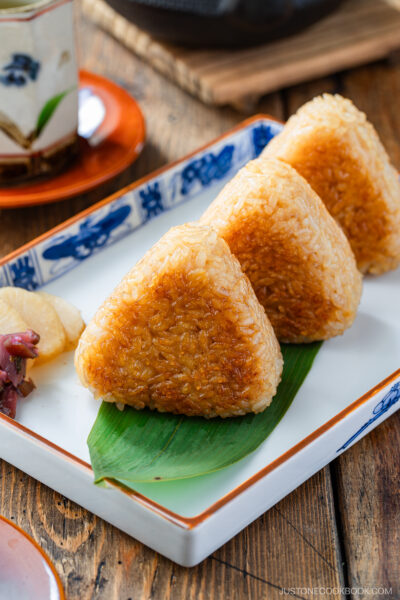
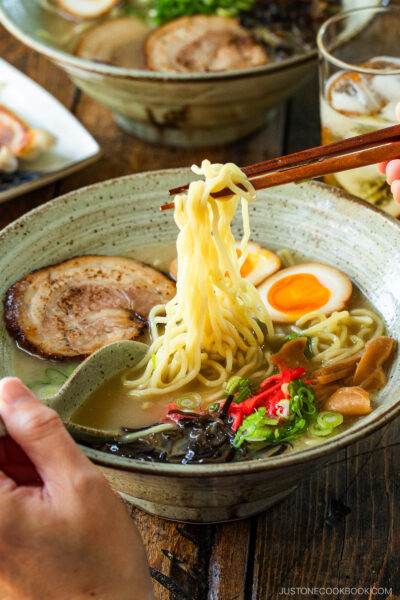





Thank you very much for this recipe and all the others. Each one I have tried so far was delicious. Just one question: here yakisoba noodles are often sold dried and not pre-cooked. Would you fully cook them before adding them or just soften them with hot water? And then mix in some oil to keep them seperate before adding them to the pan?
Hi Alexander, Thank you so much for trying Nami’s recipes and for your kind feedback!
We are so happy to hear that you enjoyed all the dishes you tried.
When using dried noodles, we recommend cooking them al dente. Then, rinse the noodles under running water to remove any remaining starch. Yes, you can add some oil to separate them until you add them to the pan.
We hope this was helpful!
Nami, you are the rescuer of many dinners in my household! I tried a recipe for Shio Koji Yakisoba from a different website, because it was a quicker, easier recipe, and it didn’t use many ingredients besides the shio koji to season it. I thought it would be the best way to try this dish for the first time to really experience the shio koji flavor… well… without going into too much detail, it did not turn out well. It was sort of bland, yet too strong shio koji flavor at the same time. (>︿<)
Your recipe, as usual, was amazing! I devoured it! You don’t cut any corners, and that’s why your recipes are always so good. And really it only took a few minutes longer anyways. The addition of garlic cloves is perfect. It adds an extra layer of umami without a particular garlic flavor, so it doesn’t take away from the shio koji flavor. I also wondered if the soy sauce would distract from the shio koji flavor, and no, it didn’t! Another wonderful layer of umami was added by it! Also, your recipe marinates the meat with shio koji, which made a big difference!!! I loved this and will make it again for sure! I couldn’t find bean sprouts this week, so I used half a yellow onion and three mushrooms to add some extra veggies. It was so good! I also used kizami shoga like you have in the picture, and it was a great garnish! Maybe you should mention it in the text of your recipe so others don’t miss it! This is a five star recipe to me, and I hope it gets more attention! I think for those who can’t eat pork belly, you could use thin diagonal (sogigiri) slices of boneless skinless chicken thigh and it would be wonderful! I want to try it that way next time! o(*°▽°*)o
Hi Lion! Aww☺️. Nami and JOC team are so happy to hear you enjoyed Nami’s tutorial and her version of Shio Koji Yakisoba!
Thank you very much for trying Nami’s recipe and for sharing your cooking experience with us.
Happy Cooking!
Do you need to run boiling water through the noodles first? thank you.
Hi Wendy, Yes, you can. It will help separate the noodle. Thank you for trying this recipe!
I did this too, to separate them first, and I found that this helped!
I’ve written before; love your posts and your recipes! Good luck with your online store and with your partnership. You work hard and deserve it!
Hi Pat! Thank you so much for your kind words! 🙂 xo